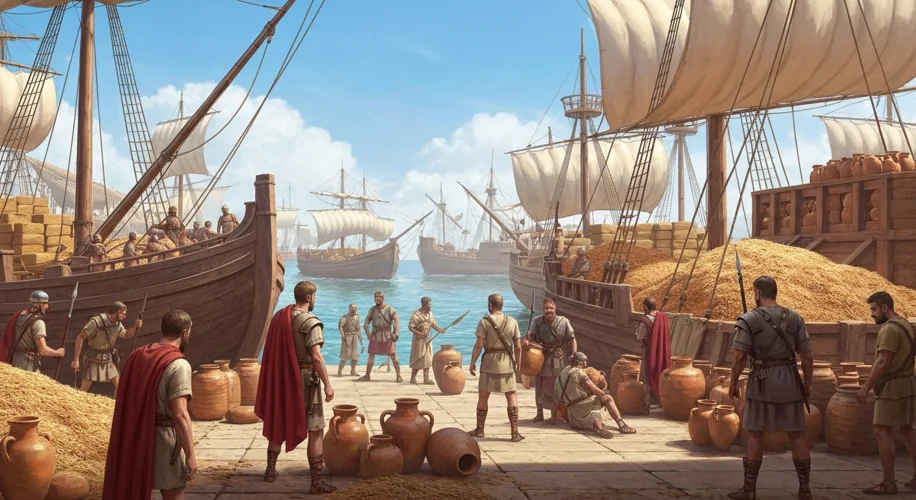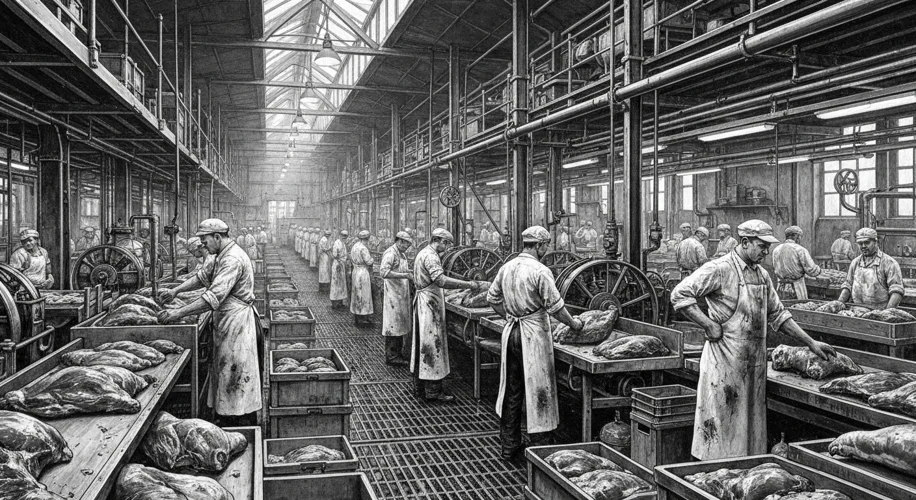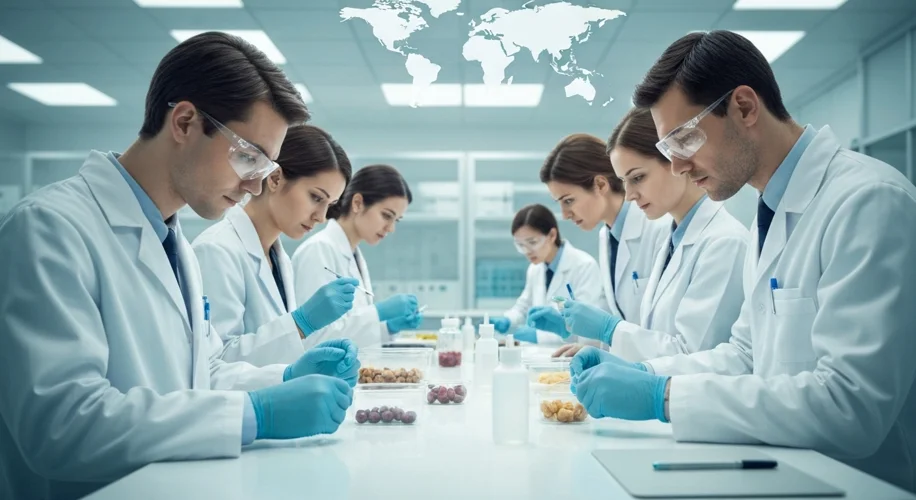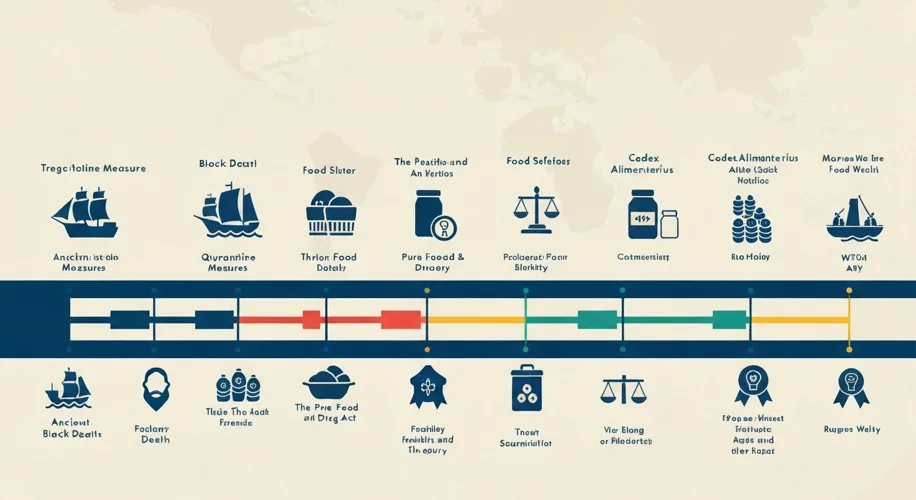The clatter of a ship’s winch, the salt spray on a sailor’s face, the bustling chaos of a medieval marketplace – these are the sensory whispers of trade that have echoed through millennia. But beneath the romantic veneer of global commerce, a darker, more insidious element has always lurked: the unseen threat of tainted goods and the diseases they carried. The history of international trade regulations and food safety is not just a dry chronicle of laws and treaties; it’s a dramatic saga of human ingenuity, devastating plagues, and the persistent, often hard-won, struggle to protect ourselves from the very bounty that connects us.
Imagine a bustling port in ancient Rome. Ships laden with grain from Egypt, wine from Gaul, and exotic spices from the East unload their precious cargo. This was the lifeblood of the Empire, a testament to its vast reach and sophisticated logistics. Yet, alongside the amphorae of olive oil and sacks of wheat, less visible stowaways could arrive: bacteria in spoiled food, vermin carrying the plague, or even just poorly preserved provisions that could sicken entire legions. Early societies, lacking modern scientific understanding, often attributed such outbreaks to divine wrath or miasmas – foul air. But the consequences were undeniably real: famines, epidemics, and the destabilization of entire regions.

The Black Death, which swept across Europe in the mid-14th century, stands as a chilling monument to the devastating power of contaminated trade. While fleas on rats are the primary culprits, the rapid spread of the plague was undeniably facilitated by the very trade routes that connected continents. Ships carrying silks from the East, laden with infected rats, docked in bustling port cities like Genoa and Venice, acting as vectors for unimaginable devastation. The mortality rate was staggering, wiping out an estimated 30-60% of Europe’s population. This cataclysmic event, while not directly leading to complex regulations as we know them today, certainly instilled a profound fear of imported goods and foreign contact. Cities began to implement rudimentary quarantine measures for ships and travelers, a hesitant first step towards controlling the spread of disease through trade.
As the Age of Exploration dawned in the 15th and 16th centuries, the scale of international trade exploded. European powers, driven by mercantilist ambitions, sought new routes and new markets. This era saw a surge in the exchange of goods, but also an increase in the potential for contamination. Think of the scurvy that plagued long sea voyages, a direct consequence of food spoilage and lack of essential nutrients. While not a direct ‘food safety’ regulation, the drive to find solutions to keep sailors alive and healthy spurred innovations in food preservation, such as salting, drying, and pickling.
The Industrial Revolution in the 18th and 19th centuries presented a new set of challenges and opportunities. Mass production meant larger quantities of food were being processed and transported than ever before. However, sanitation standards were often abysmal. Adulteration became rampant: chalk mixed with milk, poisonous dyes in confectionery, and horse meat passed off as beef. The public outcry grew, fueled by investigative journalists and reformers. Upton Sinclair’s shocking 1906 novel, The Jungle, exposed the horrifying conditions in Chicago’s meatpacking industry, depicting unsanitary practices and the sale of rotten meat. It was a literary grenade that detonated in the public consciousness.

The Jungle became a pivotal moment. It directly influenced the passage of the Pure Food and Drug Act and the Meat Inspection Act in the United States in 1906. These landmark pieces of legislation, while imperfect, marked a significant shift. For the first time, governments were taking a proactive role in ensuring the safety and wholesomeness of food products, particularly those involved in interstate commerce. The focus was on preventing misbranding and adulteration, setting standards for purity, and establishing a system of inspection.
Internationally, the need for coordinated efforts became increasingly apparent. Epidemics like cholera and typhoid, often spread through contaminated water and food supplies, did not respect national borders. The early 20th century saw the formation of international bodies aimed at public health. The Health Organisation of the League of Nations, and later the World Health Organization (WHO) under the United Nations, began to address global health concerns, including food safety. However, comprehensive international trade regulations specifically for food safety were still nascent. The General Agreement on Tariffs and Trade (GATT), established after World War II, primarily focused on reducing trade barriers, with food safety standards often treated as technical barriers that could be used for protectionist purposes.
The latter half of the 20th century witnessed a dramatic acceleration in globalization. Supermarket chains, international food companies, and complex supply chains became the norm. This interconnectedness brought greater choice and affordability but also amplified the risks. The discovery of outbreaks linked to imported ingredients, such as the infamous E. coli outbreak in 1993 linked to Jack in the Box hamburgers, highlighted the vulnerabilities. It became clear that national regulations, however robust, were insufficient in a world where food could travel from farm to table across continents in a matter of days.
This realization spurred the development of more sophisticated international frameworks. The establishment of the World Trade Organization (WTO) in 1995, succeeding GATT, brought trade and health into closer alignment. The Agreement on the Application of Sanitary and Phytosanitary Measures (SPS Agreement) and the Agreement on Technical Barriers to Trade (TBT Agreement) are crucial here. The SPS Agreement, in particular, allows countries to implement food safety measures but requires them to be based on international standards, scientific evidence, and to avoid arbitrary discrimination. This paved the way for bodies like the Codex Alimentarius Commission, jointly established by the WHO and the Food and Agriculture Organization of the UN (FAO), to develop internationally recognized food standards, guidelines, and codes of practice.

Today, the landscape of food safety regulation is a complex web of national laws, international agreements, and industry self-regulation. From farm-to-fork traceability initiatives to rigorous testing protocols for pesticides and contaminants, the emphasis is on prevention and rapid response. Consumers, armed with information and a heightened awareness, demand transparency and safety. The journey from ancient marketplaces, where a spoiled harvest could spell disaster, to today’s globalized food system, with its intricate safety nets, is a testament to humanity’s enduring drive to thrive and protect itself, one bite at a time.
The narrative of food safety regulation is far from over. Emerging challenges like climate change impacting crop yields, new food technologies, and the ever-present threat of novel pathogens ensure that this historical struggle will continue to evolve, shaping the way we eat and interact with the world for generations to come.

